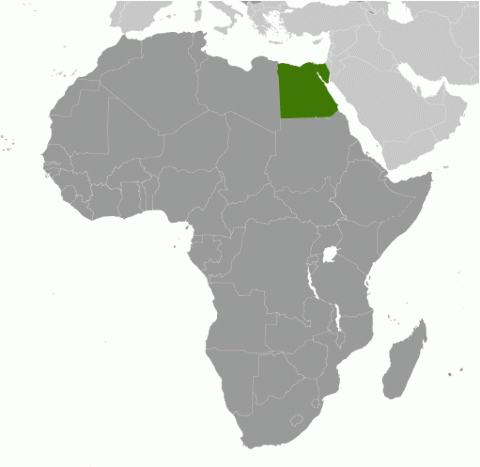Child Labor and Forced Labor Reports
Egypt


Moderate Advancement
In 2024, Egypt made moderate advancement in efforts to eliminate the worst forms of child labor. More than 120,000 families were added to the Takaful and Karama programs in 2024, providing over 5.2 million families and 22 million Egyptians with supplemental income to keep children in school. The government is also coordinating with the Harvesting the Future - Jasmine in Egypt project to reduce child labor and improve working conditions in the jasmine sector in the Gharbia Governorate. Launched in 2024, the project hired 16 child labor monitors covering 21 villages and 150 hectares of jasmine fields. However, despite these efforts, the government did not publish data on its efforts to enforce its child labor laws, including labor inspectorate resources, number of child labor violations found, and penalties imposed for child labor violations. The minimum age for voluntary state military recruitment also does not meet international standards as it is below age 16. In addition, programs to address child labor are insufficient to adequately address the extent of the problem, particularly the lack of targeted programming to prevent the commercial sexual exploitation of children and child labor in limestone quarrying.
| Children | Age | Percent and Population |
|---|---|---|
| Working | 5 to 14 | 3.6% (Unavailable) |
| Boys | 4.8% | |
| Girls | 2.4% | |
| Urban | 2.1% | |
| Rural | 4.6% | |
| Hazardous Work by Children | 15 to 17 | 13.1% (Unavailable) |
| Boys | 20.7% | |
| Girls | 5.4% | |
| Urban | 8.7% | |
| Rural | 16.1% | |
| Attending School | 5 to 14 | 94.0% |
| Combining Work and School | 7 to 14 | 3.8% |
| Sector/Industry | Activity |
|---|---|
| Agriculture | Farming, including the production of cotton, feeding chickens, collecting and packaging eggs, and fishing. |
| Industry | Quarrying† limestone, making bricks, construction, and working in carpentry workshops. |
| Services | Street work, including selling goods and collecting garbage, repairing automobiles and heavy machinery, driving tuktuks, and domestic work. |
| Categorical Worst Forms of Child Labor‡ | Use in illicit activities, including the trafficking of drugs and commercial sexual exploitation, sometimes as a result of human trafficking. Forced labor in domestic work, begging, agriculture, and quarrying. |
† Determined by national law or regulation as hazardous and, as such, relevant to Article 3(d) of ILO C. 182.
‡ Child labor understood as the worst forms of child labor per se under Article 3(a)–(c) of ILO C. 182.
Children at Higher Risk
Children from poor families are most likely to engage in child labor, with some families forcing their children into street work and domestic work. Some Egyptian girls are at risk of commercial sexual exploitation under the pretext of temporary marriage to wealthy foreign men, mostly from Persian Gulf countries. Some girls are subjected to sex trafficking and forced to sell drugs by criminal gangs.
Barriers to Education Access
Children in Egypt face barriers to education, including lack of access to identity documentation and their families' inability to pay the associated costs of attending school, such as school fees. Enrolling in public school requires a certified birth certificate, which some children born out of wedlock or born to parents of differing religions lack. Registered refugees sometimes wait over two years for government-issued residency cards that allow children to enroll in school. Children also drop out of school because of school-related costs, such as educational supplies, transportation, and uniforms. A lack of qualified teachers, poorly maintained schools, sanitation issues, classroom density, insufficient infrastructure, and bullying in schools prevent some children from attending school. In rural communities, children face difficulties getting to school due to long commuting distances. In addition, girls face additional barriers to education, including harassment on the way to school, as well as cultural constraints. The government offers some refugee children access to the public education system; however, children with little or no Arabic language skills face difficulties and are subjected to discrimination and bullying. In response, some non-Egyptians residing in the country, notably those from Sudan, have organized independent school systems unaffiliated with the government for their children.
| Standard | Age | Meets International Standards | Legislation |
|---|---|---|---|
| Minimum Age for Work | 15 | ✓ | Articles 64 and 74 of the Child Law |
| Minimum Age for Hazardous Work | 18 | ✓ | Articles 1 and 3 of Ministry of Manpower’s Decree 215; Articles 1 and 3 of the Child Law |
| Identification of Hazardous Occupations or Activities Prohibited for Children | ✓ | Articles 1 and 3, and Table 1 of Ministry of Manpower’s Decree 215 | |
| Prohibition of Slavery, Debt Bondage, and Forced Labor | ✓ | Article 89 of the Constitution; Article 291 of the Penal Code; Articles 2, 3, 5, and 6 of the Law on Combating Human Trafficking | |
| Prohibition of Child Trafficking | ✓ | Article 89 of the Constitution; Article 291 of the Penal Code; Articles 2,3, 5, and 6 of the Law on Combating Human Trafficking | |
| Prohibition of Commercial Sexual Exploitation of Children | ✓ | Article 116-bis(a) of the Child Law; Article 291 of the Penal Code; Articles 2, 3, 5, and 6 of the Law on Combating Human Trafficking; Articles 1–4 and 6 of the Law on the Combating of Prostitution | |
| Prohibition of Using Children in Illicit Activities | ✓ | Article 34 of the Law on Narcotics; Article 65 of the Child Law; Article 3 of Ministry of Manpower’s Decree 215 | |
| Minimum Age for Voluntary State Military Recruitment | 15 | ✗ | Ministry of Defense Guidelines on Youth Volunteers in the Armed Forces |
| Prohibition of Compulsory Recruitment of Children by (State) Military | ✓ | Article 1 of the Law on Military and National Service | |
| Prohibition of Military Recruitment by Non-state Armed Groups | ✗ | Article 7-bis(b) of the Child Law | |
| Compulsory Education Age | 15‡ | ✓ | Article 59(1) of the Child Law; Articles 19, 80, and 238 of the Constitution |
| Free Public Education | ✗ | Article 54 of the Child Law |
‡ Age calculated based on available information
The minimum age for voluntary state military recruitment does not meet international standards as it is below age 16. Additionally, the law does not criminally prohibit military recruitment by non-state armed groups. While public education is free by law, there are still fees for attending school.
| Organization/Agency | Role & Activities |
|---|
| Ministry of Manpower: Enforces child labor laws and regulations through its inspection department, including receiving and investigating child labor complaints. Inspectors conduct labor inspections and report violations to the police, who operate under the Ministry of Interior. If police investigations confirm criminal activity, cases are subsequently sent to the Prosecutor General's Office, which operates under the Ministry of Justice. |
| Ministry of Interior: Investigates cases of human trafficking and commercial sexual exploitation of children. Reports violations to the Public Prosecution Office under the Prosecutor General's Office. Also receives reports of violations from the Administrative Control Authority, which investigates government corruption and human trafficking. |
| Overview of Enforcement Efforts | 2024 |
|---|---|
| Has a Labor Inspectorate | Yes |
| Able to Assess Civil Penalties | No |
| Routinely Conducted Worksite Inspections | Yes |
| Unannounced Inspections Permitted | Yes |
| Has a Complaint Mechanism | Yes |
| Imposed Penalties for Child Labor Violations | Unknown |
| Conducted Criminal Investigations for Worst Forms of Child Labor Crimes | Yes |
| Imposed Penalties for Worst Forms of Child Labor Crimes | Unknown |
In 2024, 1,500 labor inspectors conducted an unknown number of worksite inspections, finding an unknown number of child labor violations. It is unknown how many investigations into suspected cases of the worst forms of child labor were conducted, prosecutions were initiated, or perpetrators were convicted.
| Coordinating Body | Role & Activities |
|---|
| National Steering Committee for the National Action Plan to Eliminate the Worst Forms of Child Labor and Supporting Family: Coordinates efforts to implement the National Action Plan for Combating the Worst Forms of Child Labor and Supporting Family. Membership includes the Ministries of Manpower, Social Solidarity, Education, Agriculture, Interior, Planning, Finance, Investment and International Cooperation, Trade, Justice, Health, Local Development, and Awqaf (religious endowments), in addition to the National Council for Childhood and Motherhood (NCCM), the National Council of Women, the Central Agency for Population and Statistics, the National Media Agency, and Al Azhar University. NCCM operates hotlines to which child labor can be reported. When alerted via the hotline, NCCM coordinates with local authorities to investigate. NCCM told local media that the hotline received 21,424 reports in 2024, including child labor complaints. In 2024, the National Steering Committee also began drafting an updated action plan and hosted training workshops. |
| Policy | Description & Activities |
|---|
| National Action Plan for Combating the Worst Forms of Child Labor and Supporting Family (2018–2025): Aims to eliminate the worst forms of child labor by 2025 and identify roles of government agencies responsible for assisting child laborers. Other objectives include expanding the child labor knowledge base; building the capacity of agencies providing support; providing social protection, with links to existing programs; enhancing education, including vocational education for children; and conducting advocacy and awareness raising. In 2024, the Ministry of Social Solidarity (MoSS) launched a child labor awareness-raising program called Waa'i ("Conscience"). |
| National Strategy on Combating and Preventing Trafficking in Persons (2022–2026): Aims to address trafficking in persons through prevention, prosecution, protection, and partnership. Includes goals such as empowering households to combat poverty and illiteracy, preventing school dropouts, and reducing child labor. In 2023, the government launched a referral mechanism that uses a whole-of-government approach to identify victims of trafficking, refer them to necessary services, investigate cases, and provide rehabilitation and reintegration services. In 2024, the government conducted trafficking in persons awareness-raising campaigns. |
| National Strategy for Childhood and Motherhood (2018–2030): Includes a chapter on child labor that aims to promote dialogue on child labor legislation, including updating the hazardous work list; building the capacity of relevant government agencies, such as the Ministry of Manpower and NCCM; developing programs to address child labor; and expanding educational and vocational training opportunities. Active in 2024. |
| Program | Description & Activities |
|---|
| MoSS Centers for Combating Child Labor:‡ MoSS-run centers, operated by partner NGOs, to provide services to children and their families. Consisting of 17 centers across 14 governorates. Active in 2024. |
| Harvesting the Future - Jasmine in Egypt (2024-2025):* Effort to reduce child labor and improve working conditions in the jasmine sector in the Gharbia Governorate. Implemented by ILO, the Fair Labor Association, and more than 15 stakeholders in coordination with the Egyptian government, including the Ministries of Labor and Social Solidarity, NCCM, and the National Council for Women. Launched in 2024, the project hired 16 child labor monitors covering 21 villages and 150 hectares of jasmine fields. |
| Solidarity and Dignity Programs (Takaful and Karama):‡ Funded by MoSS, these programs promote school attendance and health monitoring for children by providing income supplements to poor families. This partnership between the government and the World Food Program, the UN Development Program, UNICEF, and the World Bank offers income supplements to poor families, provided that household children maintain at least an 80 percent attendance record in school and mothers and children under age 6 provide demonstrable evidence of having been seen at health clinics 4 times per year. In 2024, more than 120,000 families were added to the programs, serving over 5.2 million families and 22 million Egyptians. |
* Program was launched during the reporting period.
‡ Program is funded by the Government of Egypt.
| Area | Suggested Action |
|---|---|
| Legal Framework | Provide criminal penalties for the recruitment of children by non-state armed groups. |
| Prohibit school fees for the first 9 years of education. | |
| Establish age 16 as the minimum age for voluntary recruitment by the state military, with safeguards for voluntariness. | |
| Enforcement | Publish information on the number of worksite inspections conducted, the number of child labor violations found, and number of child labor penalties that were imposed and collected. |
| Establish a mechanism for the labor inspectorate to assess civil penalties for violations of child labor laws. | |
| Increase the number of labor inspectors from 1,500 to 2,137 to ensure adequate coverage of the labor force of approximately 32 million people. | |
| Social Programs | Ensure universal access to free public education, especially for girls and refugee children, by addressing the cost of school fees and supplies, violence in schools, lack of documentation, and other barriers to education. |
| Expand programs to address the full scope of the child labor problem, particularly targeted programming to prevent and address child commercial sexual exploitation and limestone quarrying. | |
| Institute programs to encourage non-Egyptian children and victims of trafficking to make use of government reporting mechanisms so that they can be referred to the proper services. |




